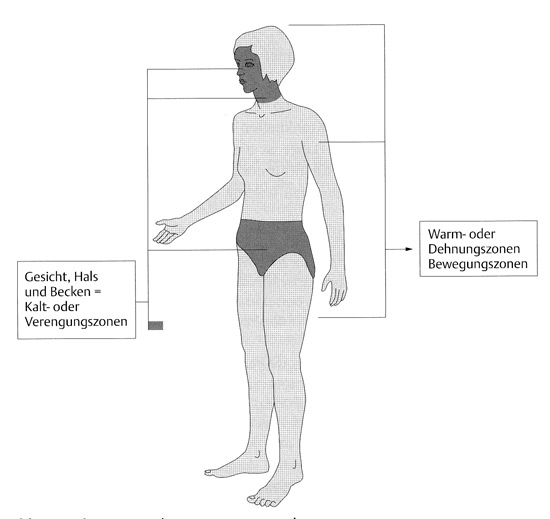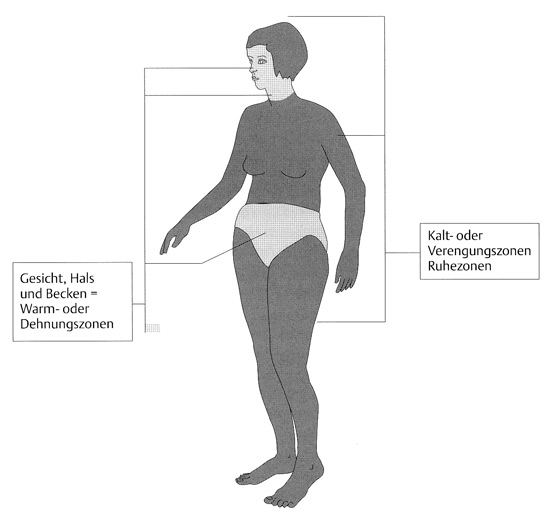Expansion and Contraction Zones
Lunar expansion and contraction zones
Solar expansion and contraction zones
Expansion and contraction zones
The expansion and contraction zones defined by Erich Wilk can also be described as positively and negatively charged areas. They form polar zones in the human body. According to Wilk, expansion zones (lunar influence, inhaler) extend more in width and are well supplied with blood. They are very sensitive to heat and this should be borne in mind when choosing clothes. Contraction zones (solar influence, exhaler) extend more in length or height and need less blood. They are only marginally sensitive to heat.
All in all, expansion impulses prevail in the brain of the lunar breathing type and can also be found in the upper part of the body (active inhalation), in the legs and arms (that crave movement) and, lastly, in the back of the head including the ears (expansion impulses of the brain). Pelvis, neck and face act in the reverse manner. They are contraction zones. They receive contraction impulses from the brain.
Contraction impulses prevail in the brain of the solar breathing type and induce active exhalation. In the solar type contraction impulses from the brain are directed to the upper part of the body (active exhalation). Legs and arms (tense and bent) and the back of the head, including the ears, receive contraction impulses from the brain. Face, neck and pelvis are the expansion zones of the solar type.
The different zones of the body must be treated appropriately to attain a sense of well-being.
The contraction zones – pelvis, neck and face of the lunar type, legs and arms, upper body and back of the head of the solar type – receive fewer expansion impulses from the brain and are not sensitive to heat. These areas should be treated with cold water.
Lunar expansion and contraction zones

Solar expansion and contraction zones

Moist heat should be applied to expansion zones three to four times a day for periods of approx. 30 minutes.
Contraction zones should be treated with dry cold. Cold can be applied frequently throughout the day but never on a specific zone for more than approx. 2 minutes at a time.